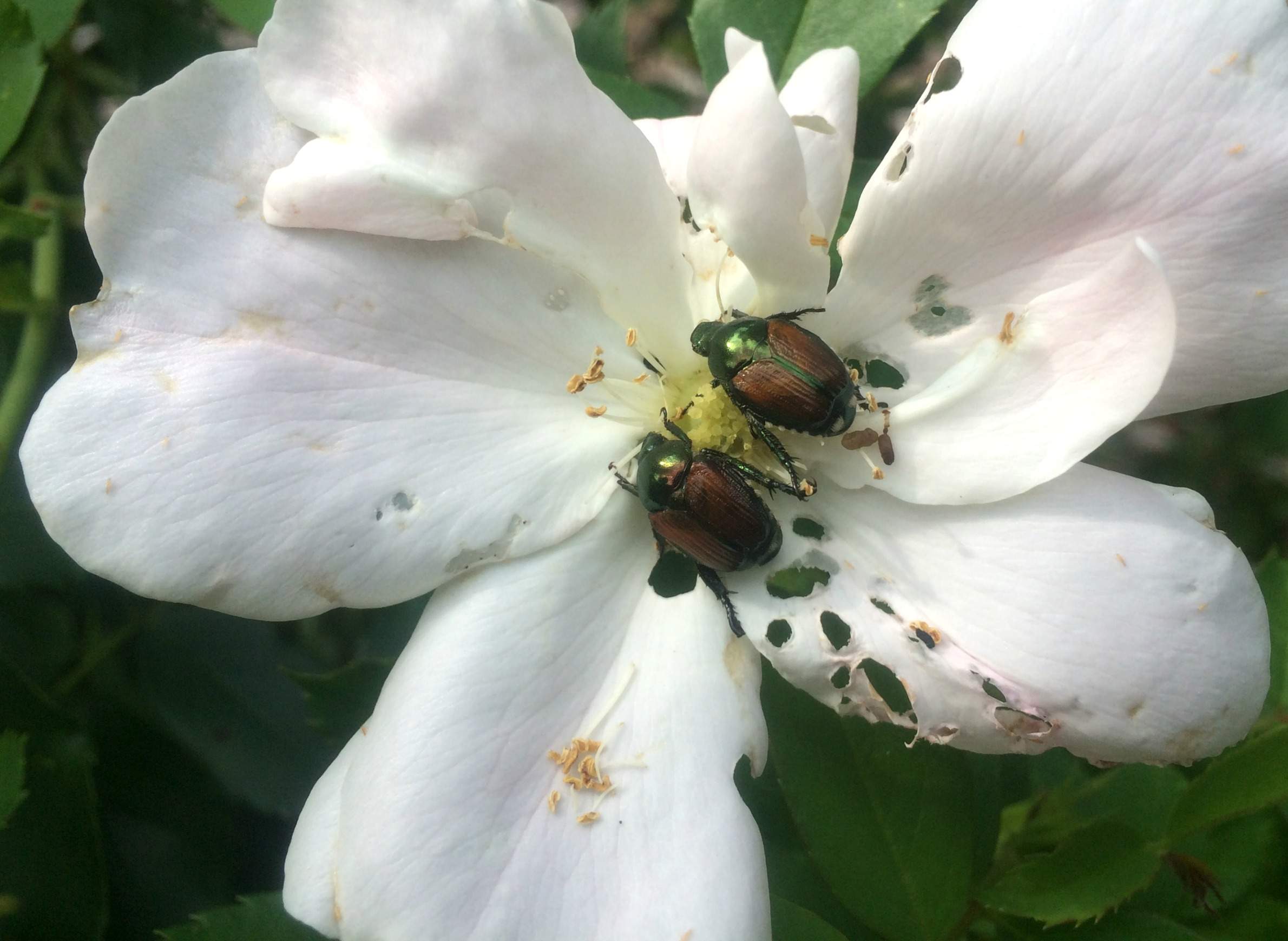
Japanese beetles eat a wide variety of landscape plants.

Japanese beetles eat a wide variety of landscape plants.
Just when a garden looks good, ravenous Japanese beetles can promptly emerge in the heart of summer to devour the gardener's favorite plants.
Discovered in the U.S in 1916, the Japanese beetle (Popillia japonica) is widespread in many states east of the Mississippi River (except Florida). The insect has been established in Wisconsin since the 1990s.
Both adult and the grub stage of Japanese beetles cause serious damage to many landscape plants (more than 320 species) and turf grasses. The adult beetles skeletonize the leaves by chewing between the veins of the leaf tissues, devour the flowers (roses) and fruits (raspberries), and ultimately weaken the plant. Roses, birch, linden, grapes, raspberries, Norway maples, beans, apples, plum, crabapples, elms, beech, asparagus and rhubarb are some of its favorite delicacies.
Huge swarms of these beetles can emerge in Wisconsin, with peak activity for six to eight weeks. Adult beetles are active during the daytime and can fly an average of 1 to 2 miles. The female beetle lays eggs on the ground, which hatch in about two weeks into white grubs that damages turf grass roots.
An adult Japanese beetle is one-half inch long with a shiny metallic green body, coppery brown wings and a small tuft of white hairs surrounding its sides and posterior.
Management options
Control options for adult Japanese beetles and their grubs vary depending on the landscape plants. No spray treatment is needed for mature trees and shrubs because they have more tolerance to the feeding damage caused by the adults and will leaf out again the next year.
Here are several tips on how to minimize these pests:
University of Wisconsin-Extension Horticulture publishes detailed information about gardening and landscape plants, and local Extension offices can provide additional advice.
Vijai Pandian is a horticultural agent and educator for the University of Wisconsin-Extension Brown County. This article is adapted from an item originally published by the Green Bay Press Gazette.